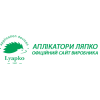Diseases of the joints
Joint pain (arthralgia) is a very common problem that can be associated with infection or toxicity, trauma, inflammation, or cartilage wear. Joint diseases are perhaps the most common ailments of the 21st century. According to statistics, more than 30% of the world's population has some kind of joint dysfunction.
Previously, it was believed that diseases of the musculoskeletal system are the lot of the elderly, but in recent years there has been a rapid “rejuvenation” of such ailments. And today every second or third person in the world has similar problems.
2 Types of joint pain in various diseases
6 How to work with the applicator, application zones
7 Acupressure for joint health
What are the first symptoms
- Pain in the joints is a classic symptom that indicates the existence of a problem. The pain often occurs at night. Although most often at first the pain is not significant.
- Pain in the knees. If you feel pain in your knees when going up and down stairs, then something is wrong with your knee joints. This condition may indicate osteoarthritis. The problem gets worse when you are overweight.
- Joint stiffness after rest.
- The presence of rheumatoid arthritis may indicate a frequent cold, combined with pain in the joints.
- Thickening of the last phalanges of the fingers and hard formations of the middle phalanges may indicate the presence of osteoarthritis.
- Violation of fine motor skills of the hands. If you notice that it has become difficult for you to do small work, for example, to thread a thread through the eye of a sewing needle, or you are unable to insert the key into the lock the first time, then such changes may indicate the development of rheumatoid arthritis, which affects, among other things, small joints.
- Joint diseases also occur with a genetic predisposition.
Types of joint pain in various diseases
The type and nature of pain sensations depends on the cause that caused them. Joints in the arms and legs hurt in different ways. On the upper limbs, unlike the lower ones, it is usually not the joints themselves that are affected, but the tissues surrounding them (tendons, ligaments, bags). This is due to the different type of load experienced by the arms and legs - dynamic and static, respectively.
Joint pain due to viral infections
The joints react to intoxication of the body during influenza and acute respiratory infections against the background of high temperature. Such pain does not require special treatment, it goes away on its own with normalization of body temperature.
Reactive arthritis
Reactive arthritis is a group of diseases in which joint pain occurs after an infection: viral or bacterial. Reactive arthritis is caused by an error in the immune system that causes inflammation in non-infected joints.
Pain usually appears 1-3 weeks after acute respiratory infections, intestinal infections or diseases of the genitourinary system, such as urethritis or genital infections. Unlike viral arthralgia, pain in the joints is intense, accompanied by swelling and impaired mobility, and an increase in body temperature. Arthritis begins more often with a lesion of one knee or ankle joint, with a transition within 1-2 weeks to the joints of the other half of the body, to the small joints of the arms and legs, to the joints of the spine.
Usually, such joint pain responds well to treatment, leaving no consequences. But some types of reactive arthritis take a chronic form and get worse from time to time.
For example, Reiter's disease - develops after suffering chlamydia and can take a chronic course. Pain in the joints in this disease is usually preceded by a violation of urination - a manifestation of chlamydial urethritis (inflammation of the urethra), which often goes unnoticed, then conjunctivitis develops. For treatment, you need to see a doctor.
Arthritis
Arthritis is an inflammatory disease of the joints. An unambiguous and exact cause of arthritis has not yet been determined, but doctors have identified some factors that can provoke the development of arthritis:
- various infections;
- allergies;
- trauma;
- malnutrition of the joint;
- hypothermia;
- excessive physical activity;
- diseases of the nervous system;
- excessive load on the joints with excess weight, etc.
Arthritis can be an independent disease or a manifestation of another disease.
In arthritis, the pain is acute, throbbing, shooting, occurs at rest and increases with movement in the limbs, can radiate to neighboring areas, with palpation (palpation), pain is noted over the entire surface of the joint, but more along the joint space.
Especially unbearable is periarthritis - inflammation of the tissues around the joint (its bag, tendons and ligamentous apparatus), for example, the shoulder joint. The pain very quickly becomes excruciating, almost unbearable. It radiates to the shoulder blade and to the neck area, increases when trying to stretch the arms to the sides at shoulder level or bend them at the elbow and bring them behind the back. When pressing on the joint, the pain intensifies. With such acute sensations, the hand should be hung on a scarf to immobilize the joint and try not to move.
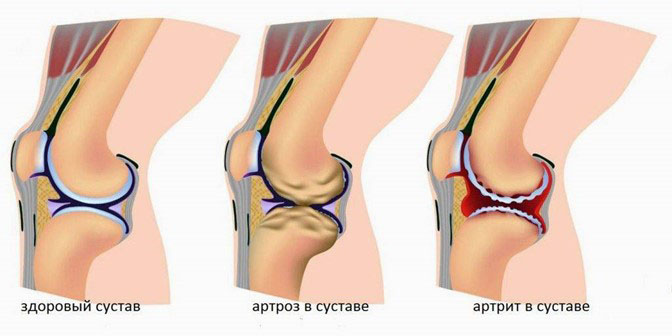
Degenerative diseases
Joint pain due to wear of cartilage - degenerative diseases (arthrosis and osteochondrosis of the spine).
Arthrosis or osteoarthritis is a disease of the joints with progressive degenerative-dystrophic changes in cartilage tissue and subsequent involvement of synovial, ligamentous and bone articular tissues.
Its development is influenced by:
- intense physical activity;
- congenital abnormalities in the development of articular tissues;
- autoimmune diseases;
- inflammatory joint diseases such as arthritis;
- excess body weight;
- severe curvature of the spine;
- injuries, bruises, dislocations, fractures, heredity;
- hormonal disorders in menopause, etc.
With arthrosis, the joints are destroyed slowly and at first imperceptibly. The pain in the joints is at first small, aching, occurring only during movements, tolerable, but over time it begins to increase, becoming constant and strong enough to disturb rest and sleep.
The insidiousness of this pain is that severe pain occurs only when irreversible signs of destruction of the corresponding joint are already visible on x-rays.
If arthrosis has affected one joint, for example, the knee, then the biomechanics changes and the function of neighboring joints, the hip and ankle, is disrupted. They also experience increased and uneven stress and wear out faster as a result.
Osteochondrosis of the spine is a common degenerative disease caused by thinning and destruction of the cartilage between the vertebrae, thinning of the cartilage, which leads to compression of the nerves extending from the spinal cord and blood vessels and, in addition to pain in the joints of the spine, causes many different symptoms. For example: headaches, dizziness, pain and numbness in the arms, shoulder joints, pain and interruptions in the heart, chest, pain in the legs, etc.
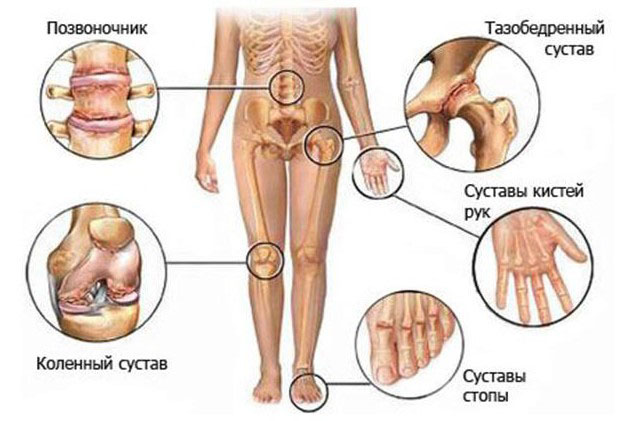
So, every fifth case of pain in the elbow joint is associated with damage to a segment of the cervical or thoracic spine. Changes in the appearance and mobility of the elbow joint are not observed. Pain in the joints in these cases can disturb patients not only when moving, but also at rest.
Autoimmune diseases
Autoimmune diseases are a group of diseases whose causes are not fully known. These diseases have one feature in common: cells of the immune system begin to attack the body's own tissues and organs, causing inflammation. Autoimmune diseases, unlike degenerative diseases, are more likely to develop in childhood or in young adults. Their first manifestation is often pain in the joints.
Pain in the joints is volatile: today one joint hurts, tomorrow another, the day after tomorrow - the third. It is accompanied by edema, redness of the skin, impaired mobility in the joints, and sometimes, an increase in body temperature. The pain in the joints goes away, but after a while it repeats again. Over time, the joints can become significantly deformed and lose mobility. A characteristic sign of autoimmune inflammation of the joints is stiffness in the morning from 30 minutes to 2-3 hours or more.
Gradually, symptoms of damage to other organs join arthralgia: heart, kidneys, skin, blood vessels, etc. Without treatment, the disease progresses. It is impossible to cure it, but modern methods of treatment can slow down the process. Therefore, the earlier treatment is started, the better the result. Autoimmune diseases include: rheumatoid arthritis, systemic lupus erythematosus, ankylosing spondylitis, or Bechterew 's disease .
Rheumatoid arthritis is the most common chronic autoimmune inflammatory disease of the connective tissue, which is characterized by damage to the joints and systemic damage to internal organs.
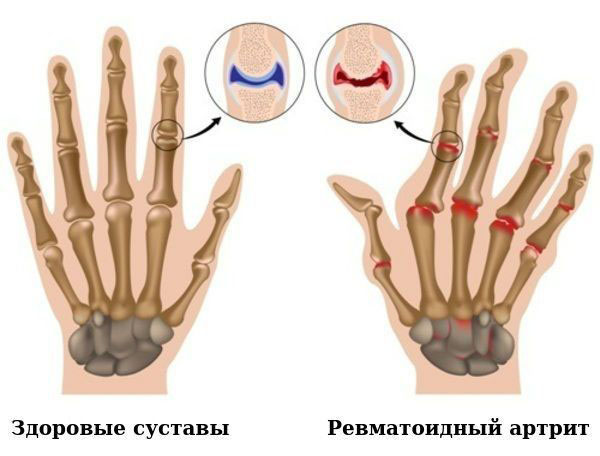
Most often, the disease begins with pain in the small joints of the arms and legs: they begin to hurt a lot, turn red, and swell. Less often - from the defeat of one knee, ankle or elbow joint, and then pains in other parts of the body join.
Systemic lupus erythematosus is a rarer disease, and younger women are more likely to get sick. It is accompanied by pain in different joints of the body, deformity of the fingers, the appearance of a rash on the skin, on the face, on the forehead and cheeks in the form of butterfly wings. Pain in the joints may be accompanied by discomfort in the heart and chest, subfebrile temperature, weakness, back pain, swelling, etc.
Ankylosing spondylitis or Bechterew 's disease - unlike lupus, it affects men more often. The disease begins with pain in the joints of the spine, in the lumbar region, sacrum, pelvis, with a gradual transition to other parts of the spine. In addition to pain, stiffness, decreased flexibility, impaired gait and, over time, complete immobility in the joints of the spine are characteristic.


Psoriasis
Psoriasis is a skin disease in which a characteristic rash appears on the surface of the body. In psoriasis, more often the small joints of the arms and legs are affected, less often the spine, which is accompanied by pain and swelling. A distinctive feature of arthritis in psoriasis is an asymmetric lesion. The skin over the joints may become bluish-purple in color, damage to the nails occurs. Over time, deformities and subluxations of the joints develop.
Rheumatism
Rheumatism is a serious disease caused by streptococci. Rheumatism is characterized by very severe pain in the large joints of the legs and arms, which appear 2-3 weeks after a sore throat or scarlet fever. It develops more often in children. The pain is severe, not allowing to touch the joint, accompanied by swelling, redness, with fever. First, some joints hurt, then others, usually symmetrical. Pain can go away on its own, but after a while, severe symptoms of heart damage appear. Rheumatism requires urgent medical attention. Only with timely treatment can damage to the heart and other organs be avoided.
Examination methods
To establish a diagnosis, you need to contact a general practitioner who will prescribe the necessary methods of laboratory and instrumental examination: blood test, synovial fluid examination, X-ray examination of the joints and computed tomography (CT), ultrasound and MRI of the joints, arthroscopy. If necessary, refer to a specialist.
Treatment
Medical treatment
If the cause of joint pain is an inflammatory reaction, then drugs that can reduce inflammation are used to treat the joints. These are, first of all, non-steroidal anti-inflammatory drugs (NSAIDs), with insufficient effectiveness, corticosteroids are prescribed in the form of injections into the joint cavity or tablets. If the cause of the pain is an infection, antibiotics are prescribed.
Special treatment regimens are used for autoimmune diseases. For continuous use, the minimum effective doses of drugs that can strongly inhibit the inflammatory response or suppress the immune system are selected.
In degenerative joint diseases, anti-inflammatory and analgesic drugs are prescribed during an exacerbation, as well as the use of metabolic drugs based on chondroethin sulfates and hyaluronic acid.
In addition to drug treatment, physiotherapy procedures are mandatory, and in the later stages, when the cartilage tissue is completely destroyed, surgical treatment, up to joint replacement.
Physiotherapy treatment
An important addition to drug therapy are physiotherapy procedures aimed at preventing further destruction of the joints.
Treatment is prescribed individually for each disease of the joints, in accordance with the age of the patient, his general condition, the presence of complications and concomitant diseases.
The main goals of physiotherapy treatment are:
- correction and prevention of the development of functional disorders;
- reduction of prolonged pain and swelling;
- normalization of local blood flow and tissue nutrition;
- prevention of atrophy of muscles and ligaments;
- improving overall well-being, performance and quality of life.
In the acute period with inflammatory diseases of the joints, two types of physiotherapy treatment are used:
- exposure to ultraviolet;
- electrophoresis of glucocorticoids on the area of the diseased joint.
Most often, physiotherapy for pain in the joints is carried out after the symptoms of exacerbation have been eliminated.
In the remission stage, the following are prescribed: UHF, laser therapy, magnetotherapy, electrophoresis with dimexide, EHF therapy, balneotherapy, mud therapy, acupuncture, Lyapko application therapy, massage.
If there are no contraindications, courses of physiotherapy are repeated every 5-6 months.

Application therapy Lyapko
Lyapko's applicators in various modifications (plates, rollers, applique belts, applique tapes) are an original, powerful device with many health-improving therapeutic possibilities.
Their action is based on the principles of traditional Chinese medicine - superficial multi-needle acupuncture, as well as on the general physiological mechanisms of life.
Mechanisms of action of the applicator
The high healing effect of Lyapko applicators is due to a combination of intense reactions:
- reflex-mechanical;
- galvano-electric;
- immunological.
Application therapy has a pronounced analgesic and antispasmodic effect. Improves blood circulation, lymph flow, microcirculation, reduces tissue swelling. It activates tissue mechanisms of immune defense, increases the level of its own opiate peptides and anti-stress hormones in the blood, reduces the sensitivity of pain receptors, has a positive psycho-emotional effect and, as a result, stimulates the general adaptive mechanisms of a person. In contact with the skin, the applicator needles stimulate the release of a person’s internal medicines, including his “inner doctor” in his work.
Applicators are widely used in medical institutions, health centers and sanatoriums. Ease of use, safety, high efficiency with minimal effort allow us to recommend applicators for self-use at home.
It is important to note that the local (local) improvement of blood circulation during application therapy occurs without additional stress on the heart, since the work of the peripheral circulation increases and the heart rests at this time. This is very important for all categories of patients, and especially for those with coronary heart disease, 1-2 degree circulatory failure, and the elderly.
Many patients are contraindicated in electrophysiotherapy procedures for various reasons. These are increased blood pressure figures, the presence of metal in the body (knitting needles, metal fragments, implants, pacemakers), pregnancy, etc. In these cases, Lyapko's application therapy is the means of choice.
With pain in the joints, patients show positive dynamics from Lyapko's application therapy, which is compatible with all types of medical and physiotherapeutic treatment.
The therapeutic effect of applicators is enhanced if they are applied to the skin, previously moistened with water, hypertonic solution or gauze with a decoction of medicinal herbs, water-based drugs. After removing the applicator, all the pores of the skin in the place of its application are opened and the application of therapeutic oils, ointments and compresses is most effective.

How to work with the applicator, application zones
If the problem is associated with damage to the joints of the upper extremities, then it is necessary to act with applicators on the cervical-collar spine, from where the innervation to the upper extremities comes, then on the joint area.
If there are problems in the joints of the lower extremities, then you need to apply applicators to the lumbosacral spine, from where the innervation to the lower extremities comes, then to the joint area.
You can act simultaneously or sequentially.
Important. Since a common cause of all autoimmune diseases are infectious diseases of the intestines or the genitourinary system, it is imperative to restore the movement of lymph and blood in the abdomen.
In autoimmune diseases, Lyapko's application therapy on the abdomen is indicated to improve the functioning of the abdominal organs, intestines, where the largest amount of lymphoid tissue is located, which is responsible for the functioning of the immune system.
To do this, it is recommended to use flat applicators on the lower thoracic and lumbosacral spine, additionally on the auxiliary zone - the anterior abdominal wall (simultaneously or alternately), you can also wrap these zones with the "Health Magic Tape" for 20-30 minutes or roll these areas with application rollers for 10-15 minutes.
Lyapko application therapy is used both as an independent procedure and as a preparation for relaxing the muscles of the anterior abdominal wall for visceral massage of the abdomen.
These procedures improve the functioning of internal organs, relieve congestion, inflammation in them, restore the functioning of the lymphatic system, and increase immunity.

It is recommended to use flat applicators on the back area: Applicator "Large mat" , "Massage needle large mat" , "Chance 6.2x4" .
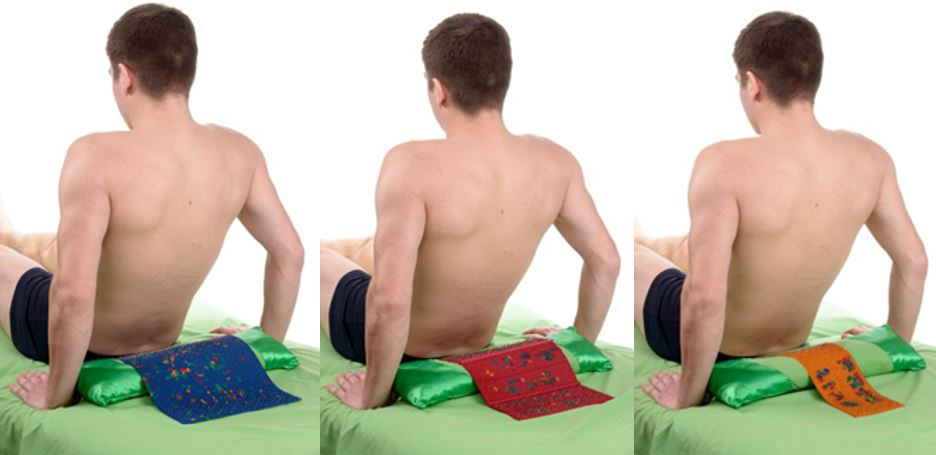
Flat applicators "Chamomile M" , "Quadro" , "Chance" , "Folk" , placing them both along the spine and across.

It can be used simultaneously on the back and joints, putting a load on top - a bag of sand or salt.
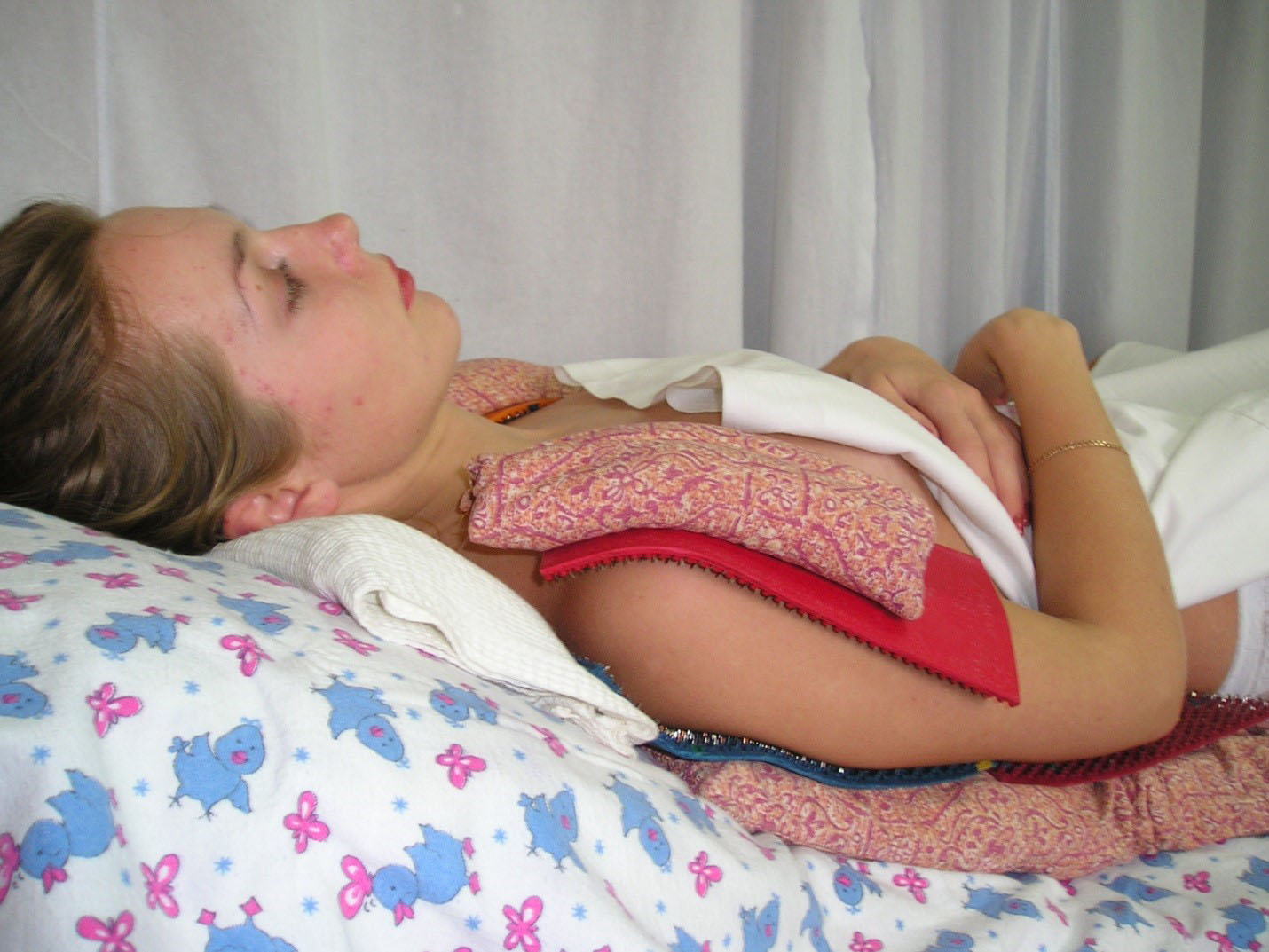
The applicator "Chamomile M" is especially convenient to use , which, thanks to its flexible "petals", acquires the relief of any part of the body. They can have an impact on any part of the spine, hip and knee joints (fixed with an elastic bandage or elastic bands with fasteners that come with the applicator); apply to calves, feet. The exposure time with flat applicators is 20-30 minutes.

You can also use static-dynamic applicators: "Magic tape "Health" , belt "Universal M" , belt "Baby" . Uniform pressure on the surface of the body and ease of fixation allows you to move freely, do the usual thing and at the same time be treated.
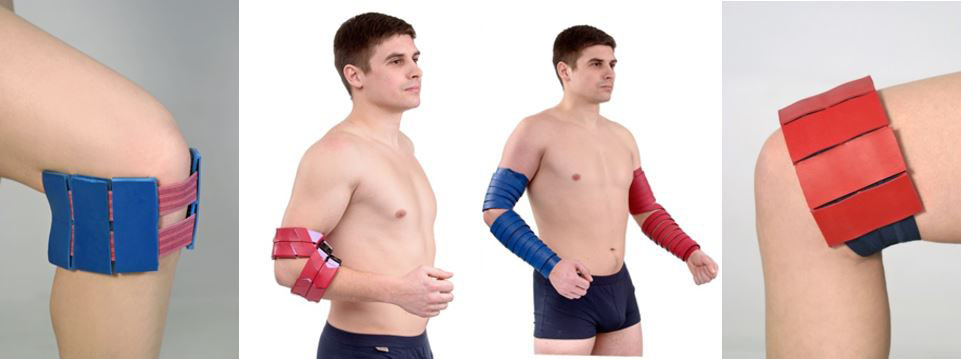
It is recommended to fix the applicator for 20-30 minutes to the areas of damaged joints; additionally, you can use the zones of the opposite healthy side for 10-15 minutes. The procedure time is 20-40 minutes, the course of treatment is 1-2 weeks, the treatment can be repeated after 2-4 weeks.

To relieve stiffness in the joints in the morning, fixation on the limb gives good results, starting with the fingertips of the “Magic Health Ribbon” , rolling along the palmar and back surface of the hand with the “Needle Ball” or application rollers.
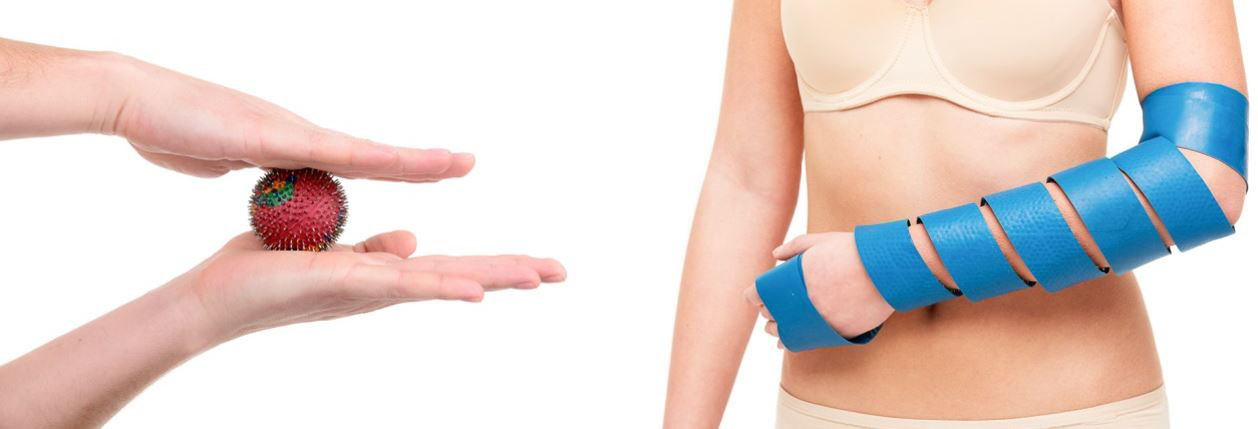
There is a positive practical experience of long-term, for several months in a row, daily use of applicators. There was a persistent improvement in well-being, removal of chronic pain, increased vitality and performance.
In addition or before the massage, it is possible to treat painful and adjacent areas using the “Large Roller M” or “Universal Roller M” . The exposure time is 3–7–10 minutes, depending on the individual skin reaction (until a uniform pink color appears).
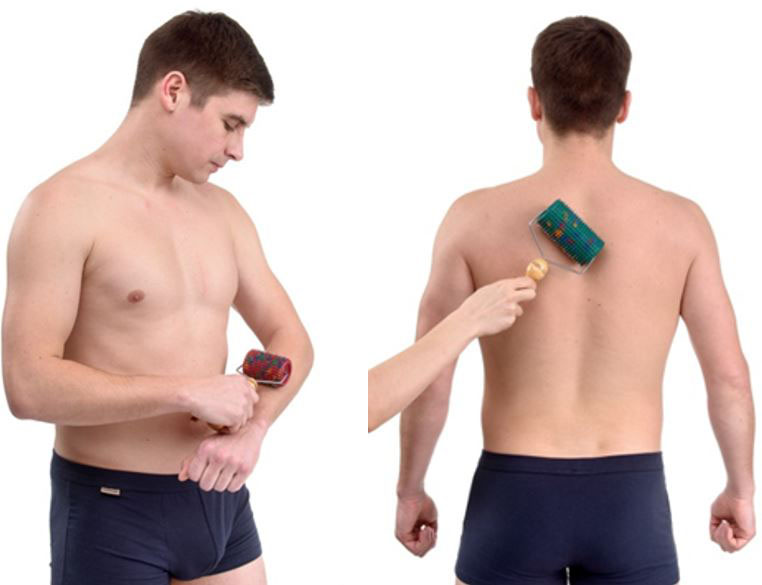
It is also necessary to massage the upper and lower extremities, the corresponding zones of the spine, the joint, for example, using the Pharaoh massager , but at the same time, direct exposure to the diseased joint should be avoided, as this can increase the inflammatory reaction in it, work above and below the joint .
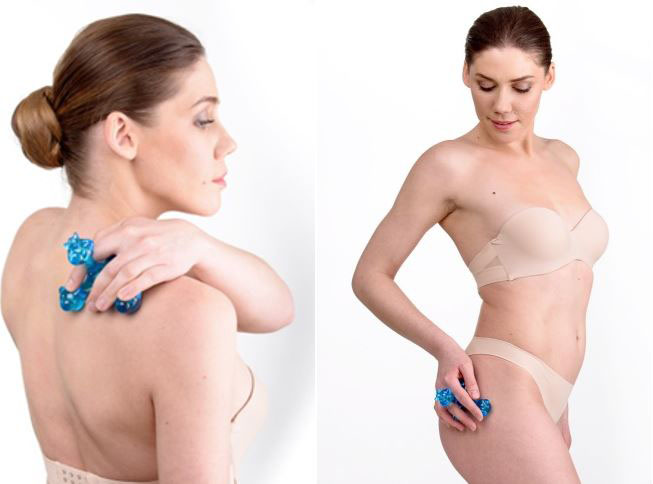
It is very effective to act on the feet using the application "Insoles Plus" , or other types of flat applicators, as well as rollers. There are biologically active points on the feet - projections of all organs and systems. The impact on them with applicators contributes to the restoration and normalization of the function of all organs and systems. Insoles can be used on other parts of the body.
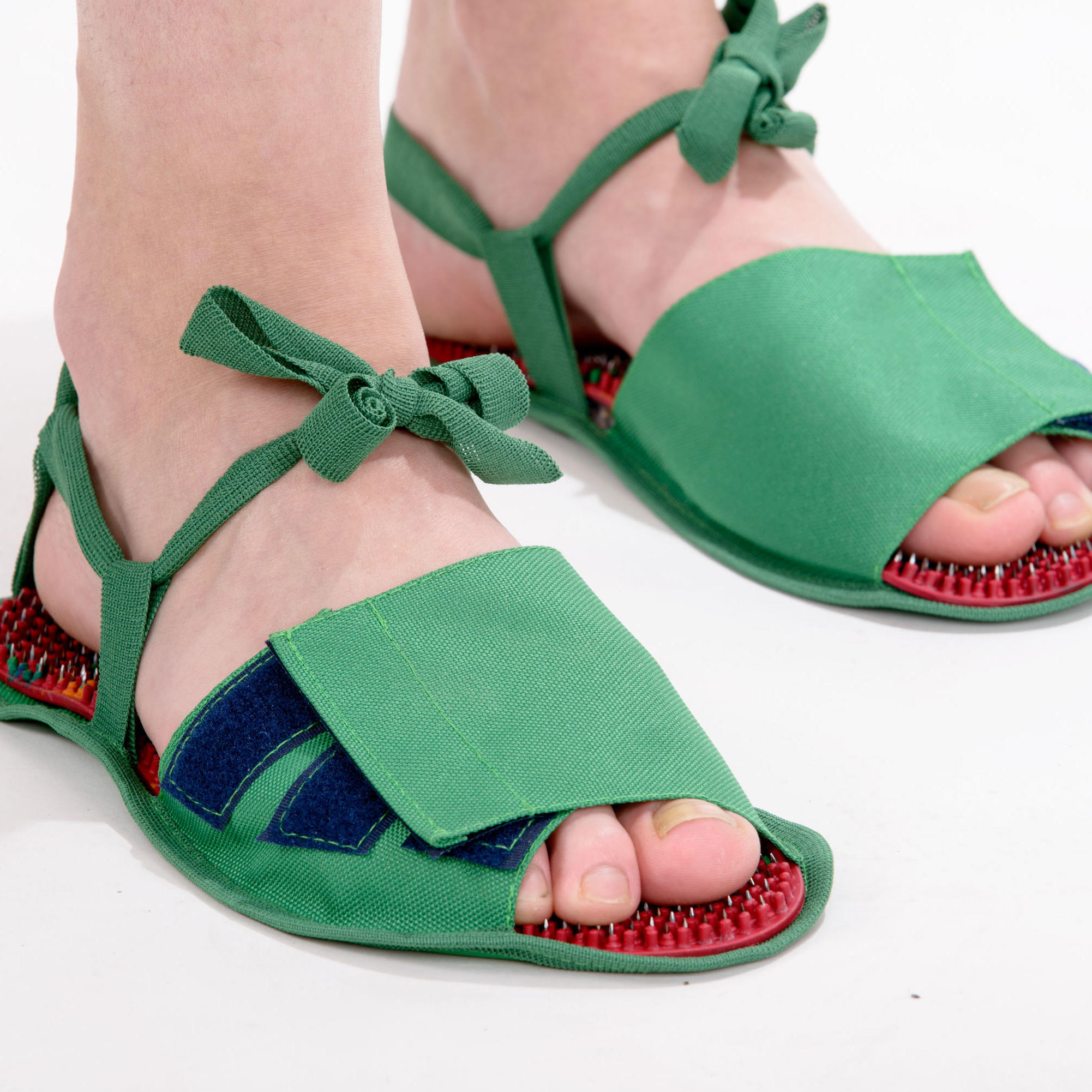
Acupressure for joint health
The main techniques that are used for acupressure are stroking, superficial and deep pressure.
Stroking is done continuously. Moreover, stroking movements can be both fast and slow. The main thing is to perform them all the time at the same pace. Stroking can be done with one finger of the hand or with the whole palm.
Superficial (light) pressure is performed with the thumb and consists in gentle pressure on the active point.
Deep pressure is performed similarly to the previous one, only with more pressure. In this case, a small depression should form on the skin under the finger.
Pressing can be done with your hands, as well as using a small applicator "Kraplinka". By adjusting the force of pressure, you can get light and deep pressure on the zone of points.
Acupressure massage of the knee joint.
By influencing the bioactive points of the knee joint, it is possible to reduce swelling, improve its motor activity and get rid of pain.
The duration of one session is 7-10 minutes. It is necessary to start massage outside the stage of exacerbation, that is, when there is no acute pain. A full course of acupressure of the knee joints is 10 procedures.
The knee joint corresponds to 8 bioactive points.
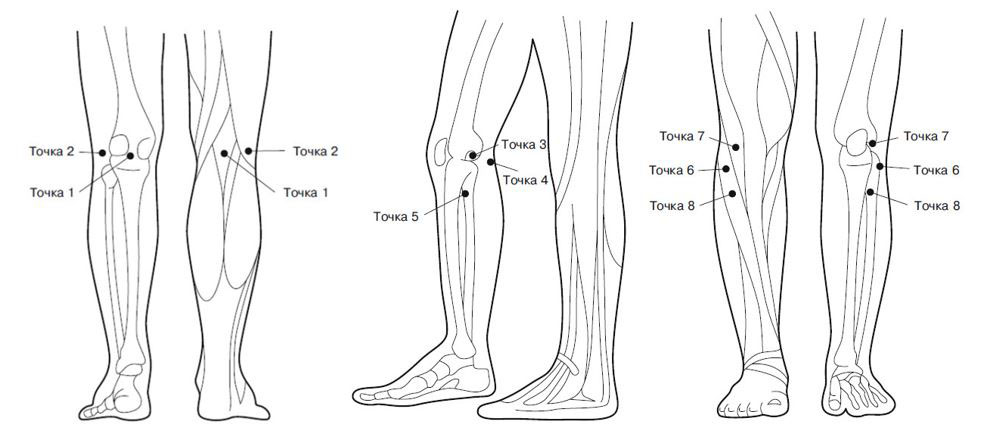
Application belts can be fixed on the zones of these points for 20-30 minutes. The Kraplinka applicator can be fixed on the pain area. Given the small area of impact, long-term wearing - 1 - 3 hours.
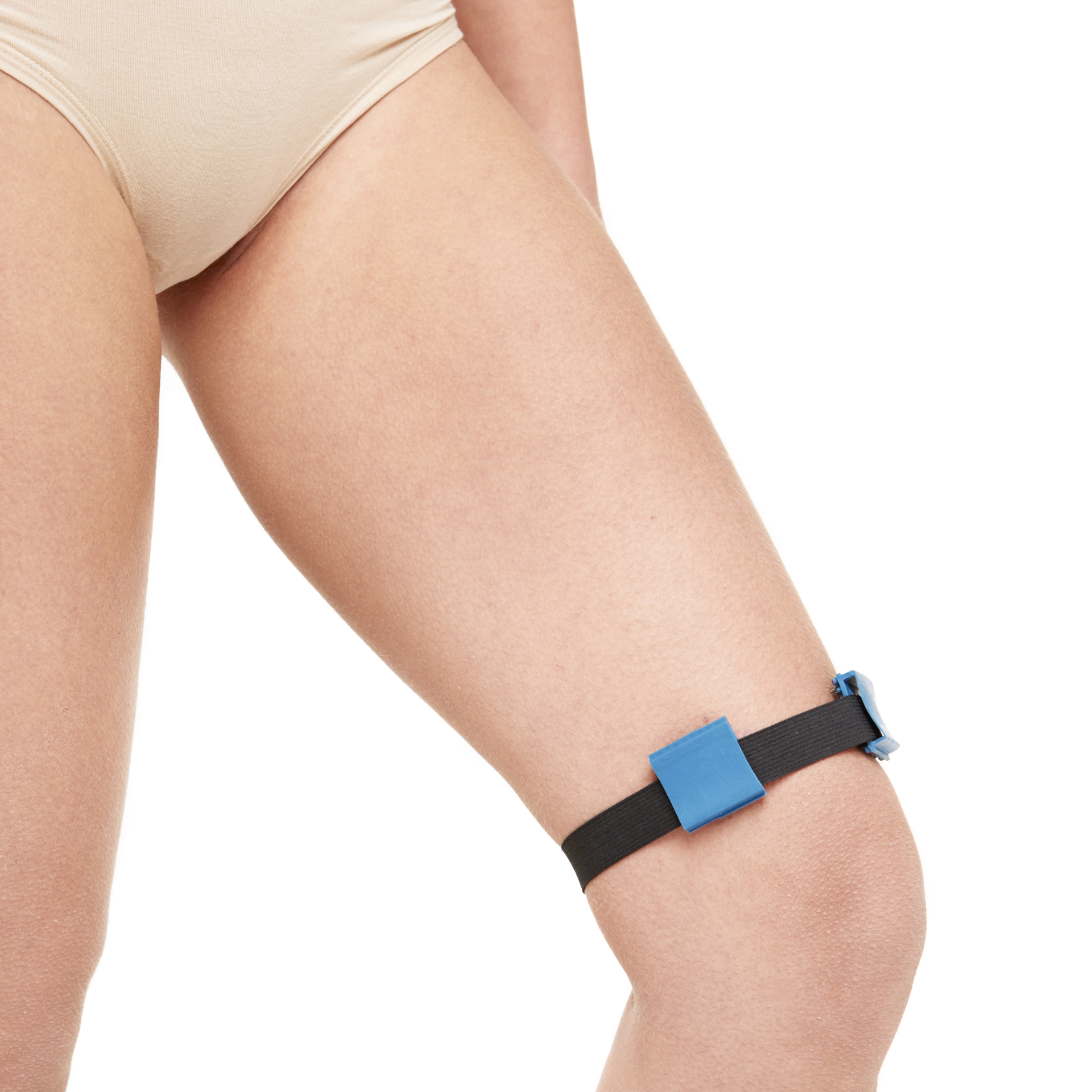
Active points for relieving joint pain
Variants of application of Lyapko applicators on the zones of points for pain in the knees (Fig. 1-5)
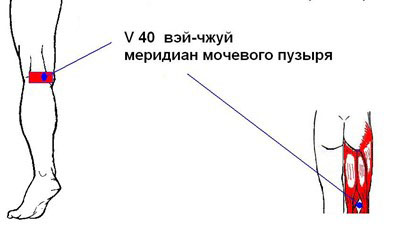
Fig.1
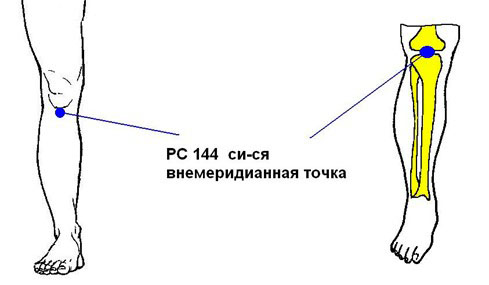
Fig.2
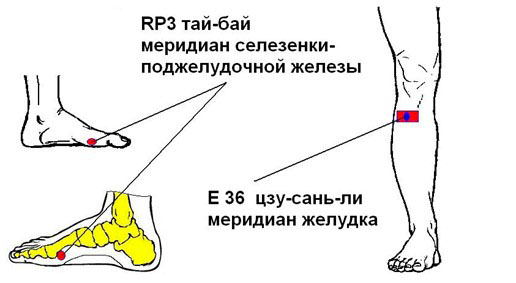
Fig.3
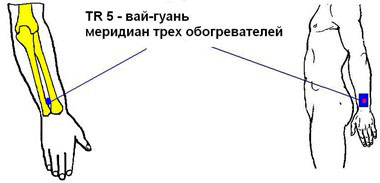
Fig.4
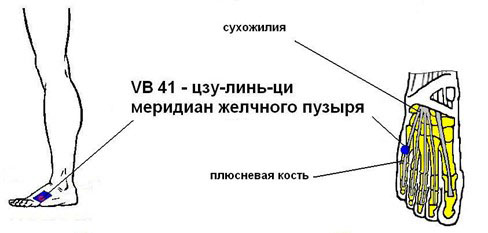
Fig.5
Points for relieving pain in the wrist joint, hand and fingers (Fig. 6)

Fig.6
The use of Lyapko applicators from the inside for pain in the elbow (Fig. 7)
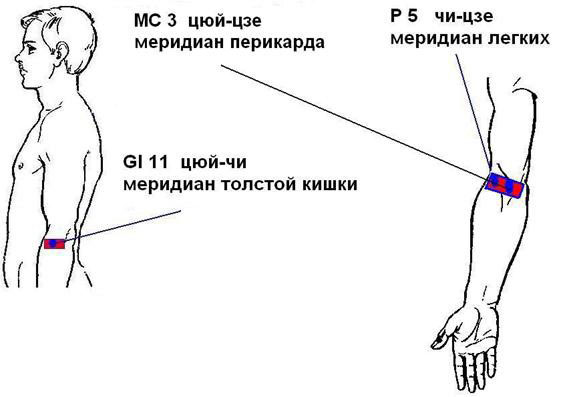
Fig.7
The use of Lyapko applicators for pain in fingers with reduced sensitivity (Fig. 8)
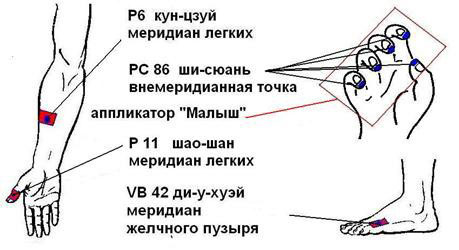
Fig.8
The use of Lyapko applicators for pain in the hip joint, extending to the inner surface of the thigh (Fig. 9)
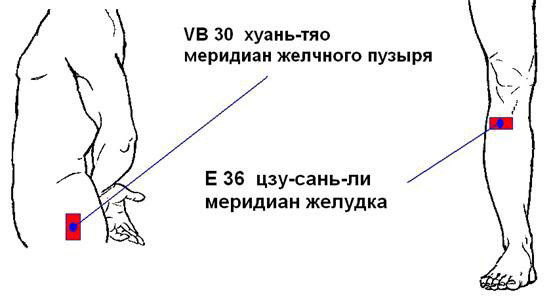
Fig.9
Points for relieving pain in the ankle joint (Fig. 10)
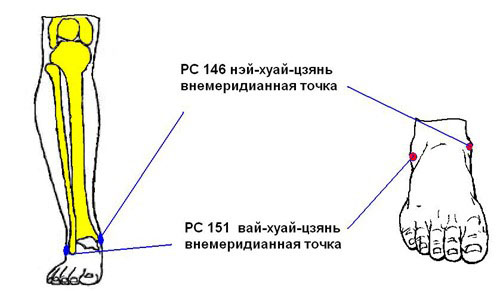
Fig.10
Active points for relieving pain in the shoulder joint (Fig. 11)
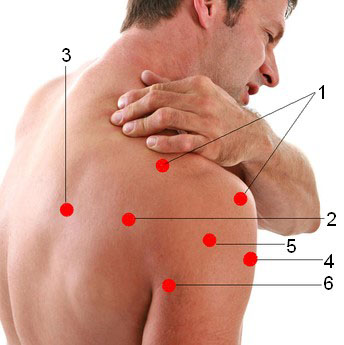
Fig.11
Prevention
Joint pain must be dealt with from the first day: the prospect of disability in the next 10-15 years will please few people. In order to prevent joint diseases, it is important to lose extra pounds in order to reduce the load on the joints, to treat diseases that lead to joint problems. Prolonged exposure to cold water is harmful to the joints: do not wash dishes with cold water, keep your feet warm.
Beneficial for joints:
- healthy lifestyle;
- hardening;
- movement, very good for joints swimming;
- rational nutrition, which includes products useful for cartilage tissue containing mono- and polyunsaturated fatty acids (vegetable oils, nuts, fish), vitamins (especially C and P), and calcium.
By following these simple rules, you can avoid many diseases of the joints, and if problems have already made themselves felt, make the course of the disease as easy as possible. The main thing is to make a healthy lifestyle a habit.
The use of Lyapko application devices is an excellent prophylactic and a guarantee of your health, vitality and good mood!
